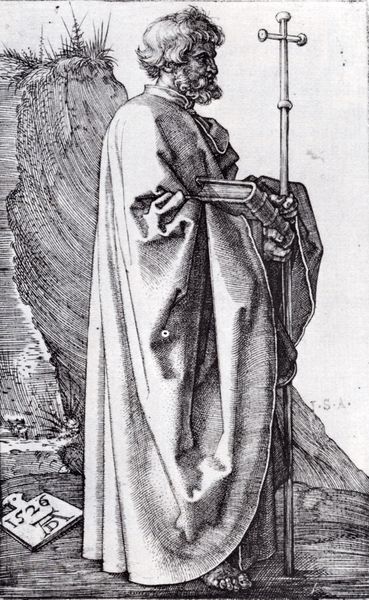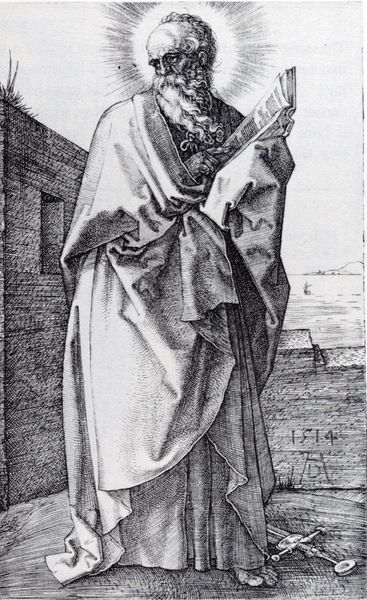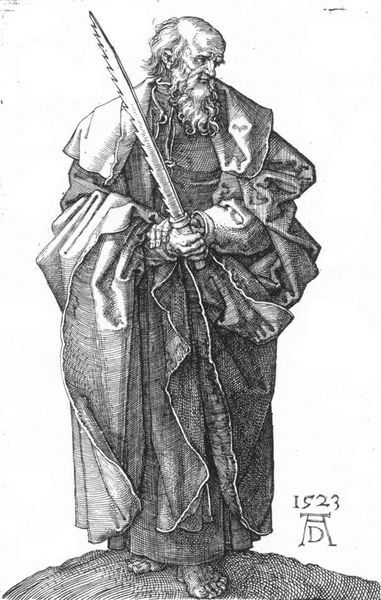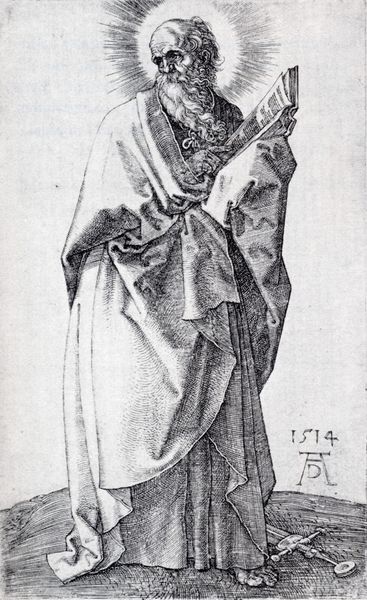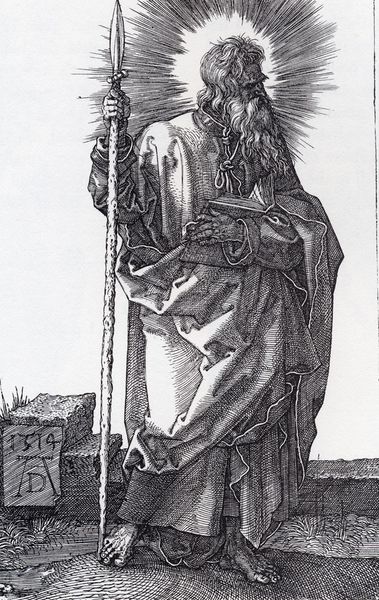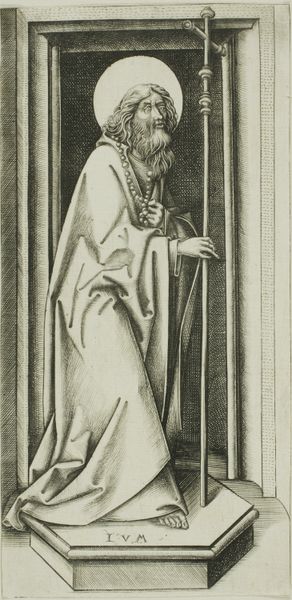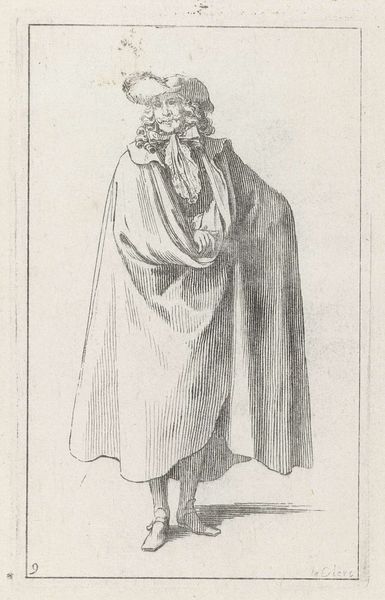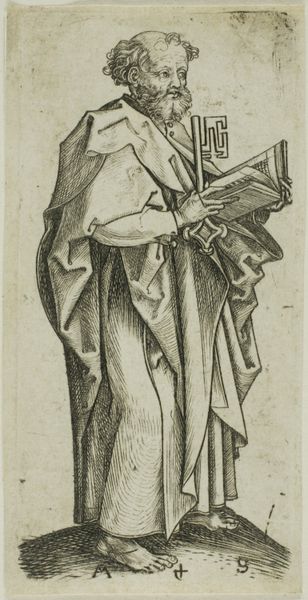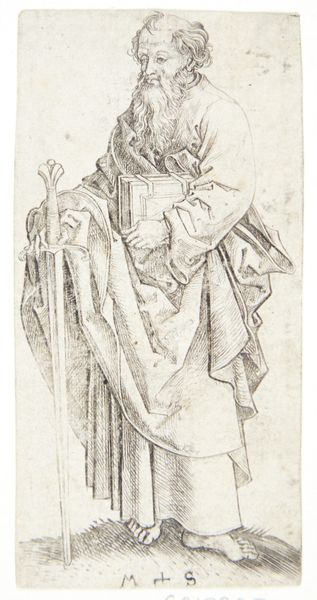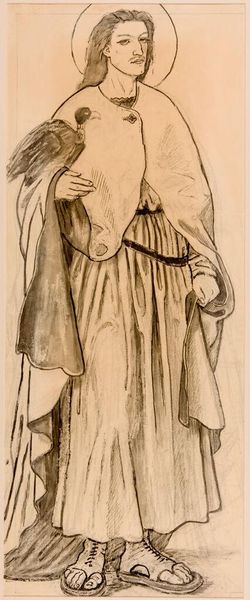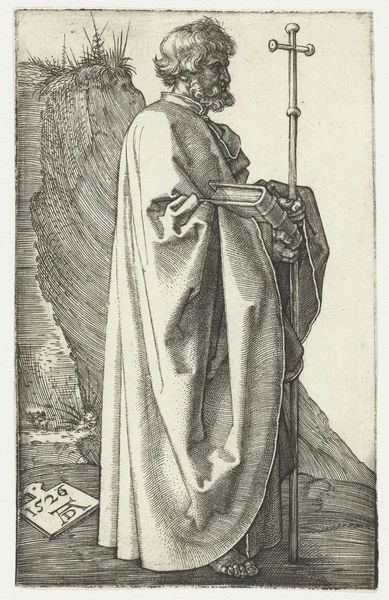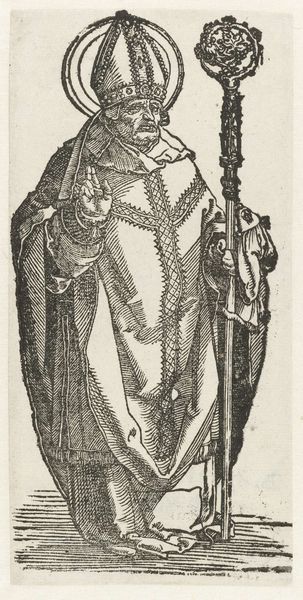
drawing, print, engraving
#
portrait
#
drawing
# print
#
prophet
#
figuration
#
11_renaissance
#
christianity
#
history-painting
#
northern-renaissance
#
academic-art
#
engraving
Copyright: Public domain
Curator: We're looking at Albrecht Dürer’s engraving, "St. Bartholomew," created in 1523. What’s your initial reaction? Editor: My eye is immediately drawn to the starkness. It's an almost brutal simplicity, accentuated by the monochrome and that very clear rendering of fabric... look how laboriously the cross-hatching suggests the drapery's weight and folds. Curator: Absolutely. Dürer was a master of detail, imbuing familiar figures with compelling new symbolism. Note St. Bartholomew's intense gaze, indicative of unwavering faith but also carrying with it a sense of the pain to come, considering he was martyred. The knife he carries symbolizes his brutal death, flaying. Editor: Indeed. It is fascinating how he turned base materials, like the copperplate, acids and paper used in the engraving process, into something evocative. Look closely and you will notice that, along with the knife, he carries a book, another telling symbolic gesture that can tell us much about St. Bartholomew being a missionary who carried The Word with him. Dürer’s technical skill to transform copper and ink into layers of meaning, which became available on the print market, shouldn't be understated. Curator: The layering you mention also plays with the cultural memory associated with Bartholomew. Dürer, while creating an individual portrait, relies on established visual symbols to connect with the viewer’s existing understanding of the saint. His flayed martyrdom is central to his story. Editor: And this accessibility – this mass-producible image - also shapes how the ideas surrounding the saint were circulated. The print medium makes possible both widespread distribution and intricate craftsmanship. Curator: A blending of high artistic skill with widespread cultural influence... and the powerful enduring symbolic weight imbued in this simple yet potent representation. Editor: Leaving us to think about the physical work required to translate belief, the work and circulation shaping perception through printed materials.
Comments
No comments
Be the first to comment and join the conversation on the ultimate creative platform.
